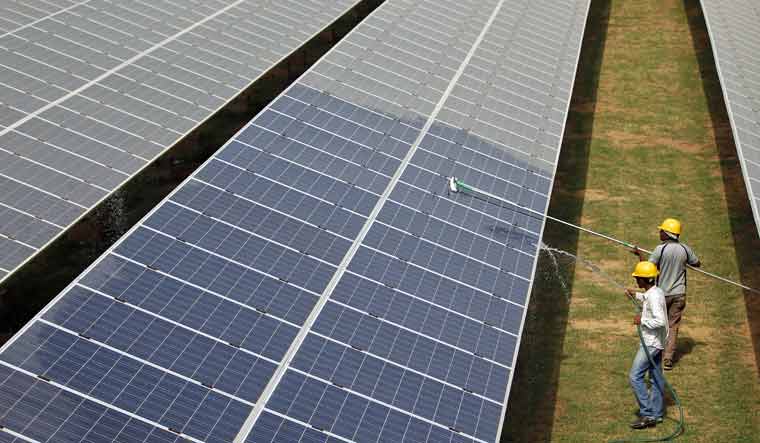Malaysia is trying to ramp up its renewables build-out but it still lags behind many of its neighbours in the region.
The country’s latest move came on Sunday when the state of Johor announced it would build South-east Asia’s largest solar power project in Pengerang, in the state’s south-east.
Capital expenditure has been pegged at some $350 million, while the project will have installed capacity of some 450 MW. It is slated to become fully commissioned by 2023.
Read more: Rosewood hotels, casino boss join Hong Kong SPAC mania
The project is Johor’s first private investment project for the year and falls in line with its 2030 sustainable development plan which focuses on environmental preservation and protection.
“With this exciting project, Johor will make a quantum leap into the world of renewable and sustainable clean energy,” Johor Sultan Ibrahim Iskandar said, adding that the project will mark Johor’s first major foray into large-scale sustainable energy to foster green economies and a cleaner environment.
“Johor is one of the states blessed with high sun hours. It is time that we tapped into this resource to boost our power generating capacity and contribute to the production of renewable energy,” he said.
The announcement comes as Malaysia, the second largest oil and natural gas producer in Asia, tries to chart a new course for its energy sector amid a more than two-year political power struggle in Kuala Lumpur.
GEOGRAPHIC ISSUES
Though the country is the world’s fifth largest liquefied natural gas (LNG) exporter, because of geographic issues with its own natural gas supply in Sarawak and Sabah on Borneo island reaching the more industrialised demand centres on Peninsular Malaysia, it still has to import LNG.
That amount is projected to reach nearly 5 million tonnes a year, according to the US Energy Information Administration’s most recent analysis of the country’s energy sector. As such, Malaysia has also built two import and re-gasification facilities to take in gas from global markets, a rare development for a major LNG producer and exporter.
Malaysia also relies heavily on coal for thermal power production, with the dirtier burning fuel making up 21% of its energy mix, followed by petroleum and other liquids at 37%, natural gas with a 36% share and renewables at only a 6% share.
However, in 2018 Malaysia announced a goal of hiking renewables to at least 20% of its power generation energy mix by 2025. To achieve that, it needs at least $8 billion worth of renewables investment, including help from not only the government but public-private partnerships as well as private financing, according to government data.
NET METERING
Malaysia has also introduced a Net Energy Metering (NEM) programme for solar PV. Under the programme, excess PV solar energy is delivered to national utility company Tenaga Nasional Berhad (TNB) on a one-on-one offset basis. The government initiative applies to all domestic, commercial, industrial and agricultural sectors as long as they are TNB customers.
The government also introduced a Large Scale Solar competitive bidding programme to drive down the cost of energy for the development of large scale solar photovoltaic plants.
Malaysia’s wind power build-out is also falling behind many of its neighbours in the region. Some of this, however, according to the Asia Wind Energy Association, is due to low mean annual wind speed at no more than 2 m/s. Moreover, the wind doesn’t blow uniformly throughout Malaysia, while wind speed varies according to region and month.
Yet, it’s still possible to have large scale wind harvesting in the country with sufficient investment of nearly $400 million to set up the required number of windmills. The challenge, however, is still building the infrastructure in select areas where wind speeds exceeded 5 m/s for commercial viability.
GREEN HYDROGEN
Green hydrogen production is another option for Malaysia though production of the fuel hasn’t reached economies of scale yet. Malaysia’s state energy firm Petronas in November said it would step up investments in green hydrogen, even as it expands its LNG and renewables portfolio. In somewhat of a surprise move, the oil and gas giant also announced plans to become carbon neutral by 2050.
Petronas also said on February 9 that it was entering into a memorandum of understanding (MoU) with Japanese power generation firm JERA as a result of both companies’ vision of a net zero carbon emissions future. They will work together to strengthen collaboration in supply chains for ammonia and hydrogen fuels while continuing to promote the use of LNG.
In the rest of the Asia-Pacific region, Japan, South Korea and Australia are leading the push for green hydrogen but still pale in comparison to Europe’s hydrogen development.
























